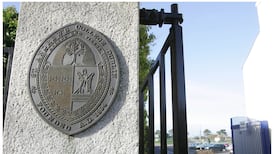ONE OF the key differences between the Swedish banking crisis in the early 1990s and the current banking crisis in Ireland is that this State’s losses seemed to be “several times more severe”.
Speaking in Tralee yesterday, Daniel Barr, the head of the bank support department at the Swedish National Debt Office, also said the Irish blanket guarantee for the domestic banks appeared to be “more generous”.
Both Ireland’s and Sweden’s crisis had been caused by a property bubble. Sweden’s response was to devalue its currency quickly by 20 per cent and it was helped by a subsequent global economic boom, said Mr Barr.
Swift action in nationalising troubled banks, after an initial period of trying to deal with the crisis on a case-by-case basis, also helped and, in 1996, the Swedish government was able to withdraw the bank guarantee.
“Government intervention has to be strong and prompt,” Mr Barr said, and governments should try to resolve the problem once and for all and not have to come back to it every quarter.
Shareholders and subordinated debt holders should take the first hit, to minimise the long-term effect on taxpayers, he said.










